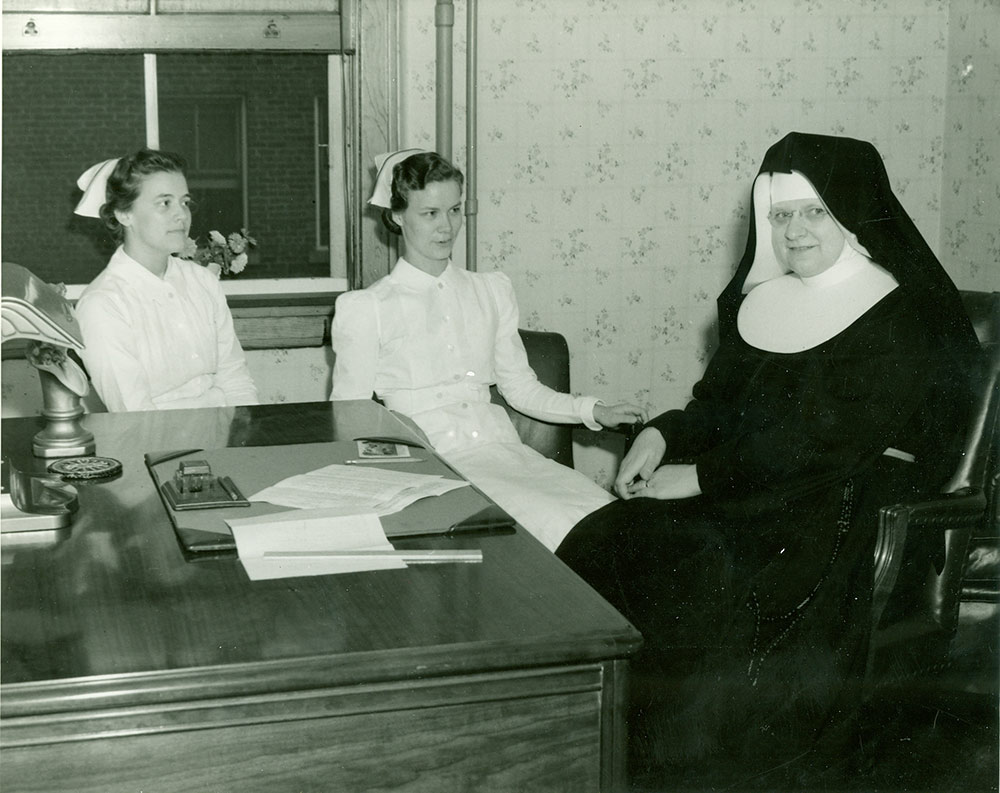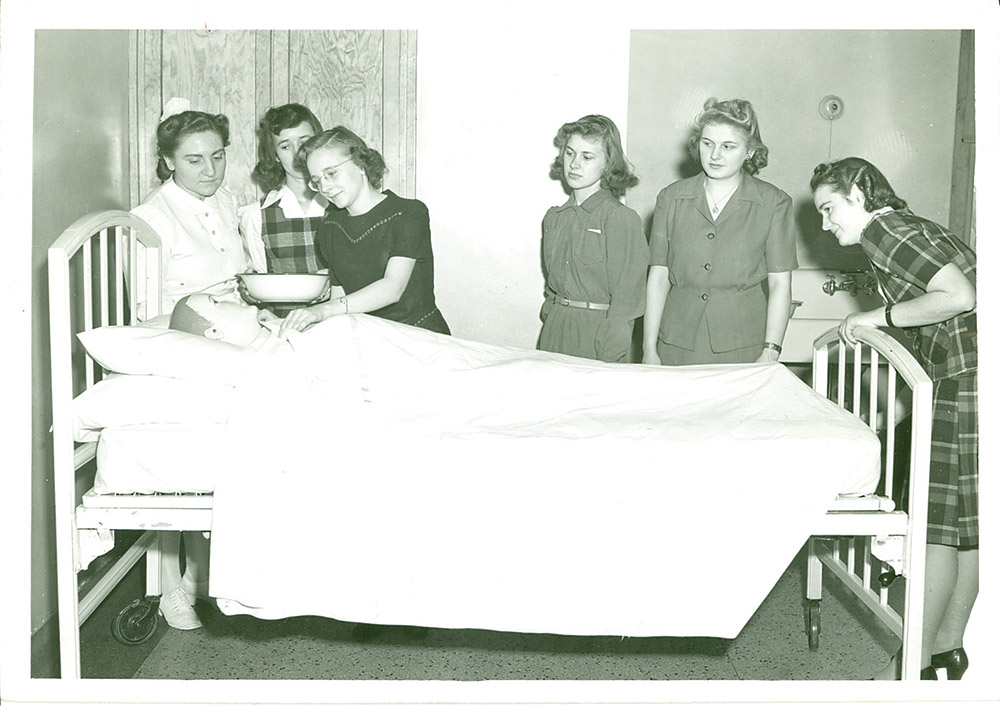New again
When first-year student Stephanie Joseph stepped on campus in August, it fulfilled one childhood dream — to attend UD — and set her on the path to realize her second: “I’ve always wanted to go into nursing since I was in elementary school.”
She saw how vital medicine was to helping her diabetic great-grandmother, and how instrumental nurses were in both the physical and mental well-being of a grandmother fighting cancer. So when UD opened enrollment this spring for a new Bachelor of Science in Nursing degree program, Joseph said, “I committed to UD that day.”
Her dream to study nursing at UD has been shared by many through the generations. She is among the 15-member inaugural cohort that signals the continuation of the University’s dedication to helping both students and the community by providing a quality nursing education — a dedication that dates back to the 1940s.
When Joseph and her classmates graduate, they will add to the 338 Flyers to whom the University granted nursing degrees from 1944 to 1969. It is a program that’s been defined by the times in which it existed, the challenges of a shifting accreditation, and a dedication to a quality, Catholic education.
Wartime program
Only two decades after the conclusion of World War I, Americans peered over the ocean to see Adolf Hitler extending his reach. In 1938, the German takeover of Austria was followed by the carving up of Czechoslovakia, both of which strengthened Hitler’s anti-Jewish policy as graphically revealed in the Kristallnacht attacks that November.
It’s unknown how such news resounded on campus, but it coincided with the University planning for what it would later call “special advantages” — preparations for war. UD compressed four-year degrees into three years and created specialized instruction, including advanced military training and course study in military German. For women, it created programs to fill imminent needs, including nursing.
In 1939, Father John A. Elbert, S.M., a 1915 alumnus and University president, received approval from the Ohio State Nurses Board to begin bachelor’s degree programs with a combined focus on professional nursing and the liberal arts.
The Department of Nursing enrolled its first students in 1942 in agreement with St. Elizabeth Hospital School of Nursing, just down the road and across the Great Miami River from campus.
The 1942-43 bulletin of coursework is emblazoned in red with “War Time” on the cover. Inside, UD’s president wrote, “[N]o matter what the future may bring forth, as parents you want to make sure that your children have an education. A good education does not depreciate, nor can that education be postponed. It must be done now or will probably never be done at all.”
More challenges
During the 1950s, the administration moved to align the nursing program with accreditation requirements. This included strengthening admission requirements, revising the curriculum and expanding library holdings.
In 1961, the chair of the Department of Nursing, Ann Franklin, submitted to the president a proposed four-year curriculum. Franklin reasoned that a sound general nursing program depended on a well-organized basic four-year curriculum. The University’s president, Father Raymond A. Roesch, S.M. ’36, agreed.
Surveys were conducted. Consultants visited. Plans were drafted.
And in the end, hopes were dashed.
So many Dayton-area nursing programs already demanded clinical time that administrators worried there would be no room for more UD students. In 1964, it canceled plans for the new degree program and admitted no new students to its current degree program. Nursing education at UD would cease to be.
Franklin wrote to the dean of the College of Arts and Sciences, “Perhaps at a future time the matter might again be discussed if there is more evidence of community interest and need.”
What's old is new again
The last nursing student, Nancy Walter Merrill, received her bachelor’s in 1969.
And the first new nursing students started classes on campus Aug. 21, 2019.
Proponents of nursing education throughout UD’s history have pointed to the needs of community, profession and individual, and how UD is well-poised to fulfill them. That includes having strong community partners in health care, including Premier Health, which is providing a nurse mentor to each current student during his or her four years.
Today, nursing students are taking classes, including courses in the Common Academic Program, on UD’s campus. In years two and three, they will dual-enroll at UD and Sinclair Community College, known for its quality associate degree program. Students will take
nursing courses and complete clinical rotations, after which they’ll receive their Associate of Applied Science degree in nursing from Sinclair. Students will then sit for the National Council Licensure Examination, allowing them to work as licensed registered nurses during their fourth year of studies on UD’s campus.
“When you couple the collaboration with Sinclair with the UD track record and the distinctive characteristics of a Marianist education, you generate a lot of excitement,” said Tonya Breymier, nursing program director and professor. “It really is designed for the common good of our patients, our families and
our community.”
First-year students moved into learning-living communities in Stuart Complex alongside members of their cohort, a decidedly different housing experience than that of her 20th century counterparts. But first-year student Richious Carton’s excitement for college and dedication to profession echo through the decades.
“I’m looking forward to meeting new people and finding out more about myself in an independent environment,” said Carton, whose professional goal is to become a pediatric nurse practitioner. “I want to do something that will have an impact on people.”
And, once again, she and others can have that through nursing at UD.

